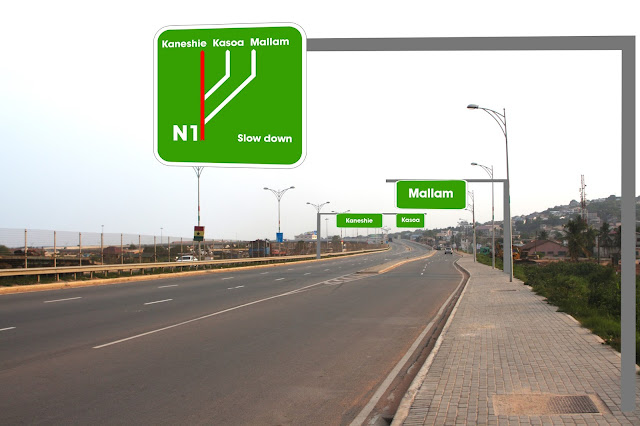Kwame Nkrumah circle is a very important
area in Accra. It serves as a very central transportation node for most
residents and visitors alike in Accra, the capital of Ghana. Its major landmark
is the roundabout named after the first president of Ghana, Osagyefo Dr. Kwame
Nkrumah.
The area has seen a rise in traffic jams
over the years, which has been a major source of headache to motorists. At peak
hours, it can take up to 45 minutes to 1hr to get past the roundabout from the
Major roads that connect to it. There have been
passionate calls for governments and city authorities to do something about the
traffic congestion especially by motorists, both private and commercial as well
as everyday commuters who have to use the route day in and day out. In response
to these calls and in fulfilment of a campaign promise, the president has
commissioned the construction of a three tier interchange as a solution. See
the video below for details of the design.
At face value, this solution looks like
a very beautiful idea and in fact it will definitely ease the congestion and
for a pretty long time. I think however that in the long term, anyone who is a
proponent of sustainable urban design would raise an eyebrow to this. It is
however not surprising though, that very little concern has been raised against
this because after all, this goes to buttress the typical Ghanaian attitude of
short term measures to resolve immediate problems without a critical assessment
of future implications. As a student of urban design, these are my concerns
about why I think this is a bad idea.
Firstly, we seem to think that building
more and wider roads and interchanges is the best solution to increasing
traffic congestion. It is indeed a solution that works well especially for the
outskirts of cities like in the case of Mallam, Achimota, Legon etc where
densities are lower and human scale activities are minimal or close to
non-existent. However, for inner city areas such as Kwame Nkrumah Circle area
with very high densities of people with human scale activities such as
pedestrian shopping, boarding of vehicles, entertainment and high end
commercial activity such as banks, shops etc. that is a bad idea. What we
really need to be considering is how to get people to or past the area while
reducing the number of cars. This is essentially what mass public
transportation systems such as the BRT, Trams and Monorail systems are very
successful at doing. The point made here is that, rather than trying to build
more roads to accommodate more cars, which will end up getting congested in the
future because number of cars will increase with time, we should be thinking of
ways to remove more and more cars from the road in favour of convenient, fast
and reliable public transport systems. My question to the supporters of the
presidents idea is that, when the traffic congestion comes back again, at a greater
intensity in the future, say, 2030, which it will, are we going to add more
flyovers to the existing design to ease traffic then, and if yes, for how long
can we keep doing that, how sustainable does that sound? If no, then there have
to be more sustainable solutions.
Secondly and buttressing the first
point, if you ever took the time to stand at circle to count the number of
passengers in the jammed vehicles at peak hours, you would find that very few
of them are usually full with passengers. In fact, a very high number of the
vehicles are occupied by just the driver. This means that the proposed
interchange and indeed most interchanges only accommodate more vehicles than
actual people when in fact what is really
important is to transport more people with less vehicles the latter case being
a more sustainable approach. The picture below illustrates the point.
Thirdly, there is more than enough
precedence to illustrate the fact that such massive infrastructures for cars in
the long term become liabilities for cities. A classic example is the city of
Detroit which at the heart of the automobile built several roads and overpasses
and interchanges. Today, Detroit has one of the lowest quality of life in the
US with very low economic activity. Another example is in Seoul where they had to pull down a several kilometre highway
built over a river due to unbearable noise levels, pollution, traffic
congestion and a general low quality of urban life along the highway to restore
the river into a pedestrianized waterfront full of quality urban social activity
and a better quality of urban life. The irony in this case is that the highway was built to ease traffic congestion in the first place.
As a fourth point, Kwame Nkrumah circle
has a huge urban heritage and significance to the city of Accra which needs to
be preserved. My own dad tells me about how anytime he was in Accra, he
relished every opportunity to take a stroll along the Ring road to Circle just
to relax at the Holy Garden, which at the time was a beautiful urban park where
people could just enjoy some leisure. Others who are old enough will attest to
how beautiful a place Kwame Nkrumah circle was in the past and they say so not
because of how swiftly one could drive past it, but how relaxing it was to walk
through and enjoy the green atmosphere of the area. I think automobiles have
done enough damage to the area already and we need to be more concerned about
how to restore it to its former glory.





